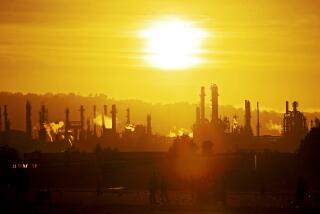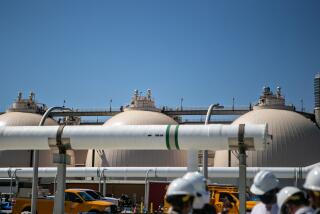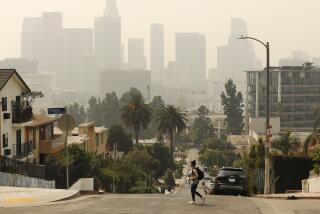EPA Keeps Policy on Sewage Plants
WASHINGTON — The Environmental Protection Agency said Thursday that it would not allow sewage treatment plants to skip a process for killing some disease-causing micro-organisms after heavy rains or snow melts. The decision reverses a plan proposed in November 2003.
Hours after EPA’s announcement, the House approved a measure to block the agency’s 2003 proposal from taking effect. The measure had been offered by lawmakers before EPA’s about-face.
If the EPA had adopted the policy, U.S. sewage plants might have avoided an estimated $90 billion or more in facility upgrades to allow for oxidation of pollutants in wastes after heavy rains. That lets microbes feed on organic materials, removing viruses and parasites.
The agency normally requires sewage to be treated using a three-step process. But during peak flows from storms, it routinely lets plants discharge a blend of fully and partly treated sewage. The agency had proposed letting that become the official policy for handling the huge volume of wastewater that storms bring, but changed its mind after reviewing 98,000 public comments and the testimony at some congressional hearings.
“Blending is not a long-term solution,” said Benjamin H. Grumbles, assistant administrator of the agency’s Office of Water. “Our goal is to reduce overflows and increase treatment of wastewater to protect human health and the environment.”
Agency officials haven’t decided what their National Pollutant Discharge Elimination System requirements should be for municipal wastewater treatment during wet weather. They said they were looking at “the most feasible approaches to treat wastewater and protect communities, upstream and downstream.”
Tiernan Sittenfeld, legislative director for the League of Conservation Voters, which supported the House measure, said EPA’s reversal was “a victory for health” and would help ensure cleaner lakes, rivers and streams.
Aging sewer systems are designed to overflow from rain, each year discharging more than a trillion gallons of untreated sewage into waterways, raising the chance of waterborne disease outbreaks.
Researchers at Johns Hopkins University say that more than half of the waterborne disease outbreaks in the United States in the last 50 years followed a period of extreme rainfall.
More to Read
Sign up for Essential California
The most important California stories and recommendations in your inbox every morning.
You may occasionally receive promotional content from the Los Angeles Times.










